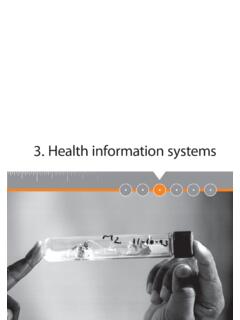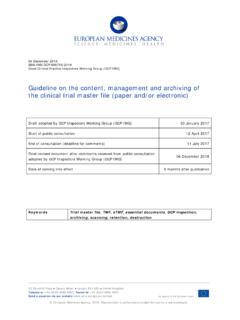Transcription of Advanced Metering Infrastructure and Customer Systems ...
1 2 AMI and Customer Systems : Results from the SGIG Program Table of Contents Executive Summary ..4 Major Findings .. 4 Key Lessons and Conclusions .. 6 Future Directions and Next Steps .. 8 1 AMI and Customer System Deployment in the Smart Grid Investment Grants ..9 AMI and Customer Technologies and Functions Deployed in SGIG .. 10 Advanced Metering 11 Customer Systems .. 15 Time-Based Rates and Demand-Side Programs .. 16 Project Build and Impact Metrics .. 17 Key data Limitations and Considerations.
2 17 2 Major AMI Findings: Improved Customer Service and Reduced Operational Costs .. 19 Automated Billing and Remote Meter Reading, Connection, and Disconnection .. 19 Key Result: Operations and Maintenance Cost Savings .. 21 Key Result: Improved Accuracy and Customer Services .. 21 Online Bill Payments and Pre-Pay Billing Plans .. 23 Key Result: Enhanced Revenues and Reduced Bad Debt Write-Offs .. 23 Meter Tampering and Theft Detection .. 24 Key Result: Enhanced Revenue collection .. 24 Outage Detection and Management.
3 25 Key Result: More Accurate Outage Location to Support Rapid Restoration .. 25 Key Result: Improved Outage Information Sharing and Customer Notification .. 26 Voltage Monitoring .. 26 Key Result: Enhanced Voltage and Reactive Power Management .. 27 Case Study: CenterPoint Energy .. 28 Case Study: Oklahoma Gas and Electric (OG&E) .. 30 Case Study: Central Maine Power (CMP) .. 33 Case Study: Potomac Electric Power Company (PEPCO) District of Columbia .. 36 Case Study: Electric Power Board of Chattanooga (EPB).
4 38 Case Study: Talquin Electric Cooperative (TEC) .. 40 Case Study: Central Lincoln Peoples Utility District .. 42 Case Study: Tri-State Electric Membership Corporation .. 44 3 3 Major Customer System Findings: New Rates and Demand-Side Management Capabilities .. 47 Time-Based Rates and Direct Load Control .. 47 Key Result: Reduced Peak Demand and Overall Consumption .. 49 Key Result: Customer Bill Savings .. 50 Distributed Energy Resource and Electric Vehicle Integration .. 51 Key Result: Improved Integration and Billing for DERs and EV Charging.
5 51 Key Result: New Insights into Electric Vehicle Charging Patterns .. 52 Case Study: Sacramento Municipal Utility District (SMUD) .. 53 Case Study: Glendale Water and Power (GWP) .. 56 Case Study: Burbank Water and Power (BWP) .. 58 Case Study: Sioux Valley Energy (SVE) .. 60 4 Key Lessons and Conclusions .. 62 Multiple Factors Affect the AMI Business 62 Communications Systems that Serve Smart Grid Functions Beyond AMI Deliver More Value .. 63 Systems Integration is a Critical Linchpin for AMI Impacts and Benefits.
6 64 Effective AMI, MDMS, CIS, and Billing Integration Greatly Enhance Billing and Metering .. 64 OMS and DMS Integration Increases the Value of Smart Meters .. 65 Customer Systems Integration Involves Interoperability Challenges .. 66 AMI and DA Integration Boosts the Value of Individual Technologies .. 67 Workforce Management and Training are Critical to AMI and DSM Success .. 67 Cybersecurity and Interoperability Are Integral to Smart Grid .. 69 Lessons Learned and Best Practices from the 2012 Smart Grid Cybersecurity Information Exchange.
7 70 Designing and Promoting Effective Web Portals Involved Several Challenges .. 71 Customer Education Improves Demand Response Programs .. 71 5 Future Directions and Next Steps .. 72 SGIG Utilities Largely Plan to Expand AMI and Customer System Investments .. 72 AMI and Customer System Projects Highlighted Continuing R&D Challenges .. 74 APPENDIX A. Where to Find Additional Information .. 76 Approach to Analysis and data collection .. 79 Supporting Build Metrics data .. 83 Supporting Impact Metrics data .
8 95 Acronyms and Abbreviations .. 97 4 AMI and Customer Systems : Results from the SGIG Program Executive Summary Advanced Metering Infrastructure (AMI) is an integrated system of smart meters, communications networks, and data management Systems that enables two-way communication between utilities and customers. The system provides a number of important functions that were not previously possible or had to be performed manually, such as the ability to automatically and remotely measure electricity use, connect and disconnect service, detect tampering, identify and isolate outages, and monitor voltage.
9 Combined with Customer technologies, such as in-home displays and programmable communicating thermostats, AMI also enables utilities to offer new time-based rate programs and incentives that encourage customers to reduce peak demand and manage energy consumption and costs. This report shares key results and benefits from the 70 SGIG projects implementing AMI and Customer system technologies, and also documents lessons learned on technology installation and implementation strategies. With this report, the Department of Energy (DOE) aims to further accelerate grid modernization by helping decision makers better assess the benefits and costs of AMI and Customer system investments and learn from leading-edge utilities.
10 Major Findings SGIG projects demonstrated that AMI and Customer Systems can achieve substantial grid impacts and benefits for customers and utilities, including: Reduced costs for Metering and billing from fewer truck rolls, labor savings, more accurate and timely billing, fewer Customer disputes, and improvements in operational efficiencies. More Customer control over electricity consumption, costs, and bills from greater use of new Customer tools ( , web portals and smart thermostats) and techniques ( , shifting demand to off-peak periods).















